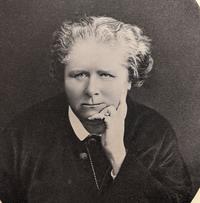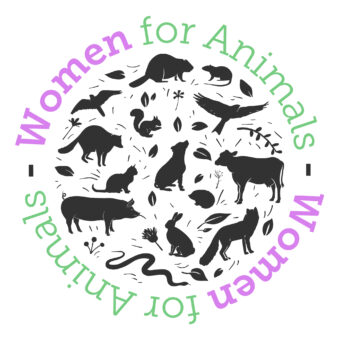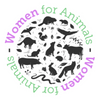
Frances Power Cobbe, irische Schriftstellerin, Tierversuchsgegnerin, Frauenrechtlerin und Sozialreformerin, wurde am 4. Dezember 1822 geboren.
Das Leben von Frances Power Cobbe kann in zwei Abschnitte unterteilt werden: In der ersten widmete sie sich den Pflichten einer Frau im viktorianischen Irland und gehorchte ihrer Familie, in der zweiten wurde sie zu einer der wichtigsten Protagonistinnen der ersten Frauenbewegung.
In ihren Dreißigern begann sie, ihr eigenes Leben zu leben. Sie reiste ein Jahr lang durch Europa und lernte viele unabhängige Frauen kennen, darunter auch Mary Lloyd.
Frances traf Mary in Rom, wo sie als Bildhauerin arbeitete.
Gemeinsam zogen sie nach Bristol und lebten als berufstätiges lesbisches Paar. Frances verdiente ihren Lebensunterhalt als Lehrerin an einer Mädchenschule und arbeitete später als Journalistin und Publizistin.
Sie veröffentlichte in Londoner Zeitungen Artikel über Tierschutzthemen, aber auch Leitartikel und Bücher über häusliche Gewalt, das Frauenwahlrecht und Eigentumsrechte.
Frances und Mary teilten auch ihr Interesse am Tierschutz – zwei von Marys Gemälden der Hunde ihres Neffen erschienen 1868 in einer Ausstellung von Künstlerinnen, und Mary war Direktorin des „Home For Lost Dogs“, aus dem das „Battersea Dogs Home“ hervorging, für das Frances und Mary Geld sammelten, indem sie ihre eigenen Häuser verpfändeten.
Frances war nicht nur Mitglied des Exekutivrates der National Society for Women’s Suffrage in London, sondern auch eine führende Kämpferin und Pionierin für die Abschaffung von Tierversuchen. Sie gründete 1875 die National Anti-Vivisection Society (NAVS) und 1898 die British Union for the Abolition of Vivisection.
Obwohl weder ihr Engagement für Tiere noch ihr Feminismus heute als „radikal“ gelten würden, war sie eine der ersten in Großbritannien, die in ihrer Arbeit den Kampf für Frauenrechte mit dem für Tierrechte verband.
Es wurde behauptet, sie habe „eine Identifizierung zwischen der Brutalität des Mannes gegenüber Tieren und seiner Brutalität gegenüber Frauen.“ festgestellt.
Frances Power Cobbe, die selbst ihre Autobiographie „The Life of Francis Power Cobbe“ (1894) veröffentlichte, starb am 5. April 1904 in Hengwrt. Sie wurde auf dem Friedhof von Llanelltyd neben der 1896 verstorbenen Mary Lloyd beigesetzt.
Quellen:
https://www.suffrageresources.org.uk/resource/3250/frances-power-cobbe
https://spartacus-educational.com/Wcobbe.ht
Frances Power Cobbe, Irish writer, anti-vivisectionist, suffragette and social reformer, was born on 4 December 1822.
Frances Power Cobbe’s life can be divided into two halves: In the first, she devoted herself to the duties of a woman in Victorian Ireland, obeying the family; in the second, she became one of the most important protagonists of the first women’s movement.
In her thirties she began her own life. She travelled the continent for a year and met many independent women – including Mary Lloyd.
Frances met Mary in Rome, where she was working as a sculptor.
They moved to Bristol together and began to live out their emancipation as a lesbian professional couple. Frances earned her living teaching at a girls‘ school and later worked as a journalist and publicist.
She published on animal rights issues in London newspapers, as well as editorial columns and books on domestic violence, women’s suffrage and property rights.
Frances and Mary also shared an interest in animal activism – two of Mary’s paintings of her nephew’s dogs appeared in an exhibition of women artists in 1868, and Mary was a director of the Home For Lost Dogs, which became the Battersea Dogs Home, for which Frances and Mary raised money by mortgaging their own homes.
As well as being a member of the Executive Council of the London National Society for Women’s Suffrage, Frances was a leading campaigner and pioneer in the abolition of vivisection. She founded the National Anti-Vivisection Society (NAVS) in 1875 and the British Union for the Abolition of Vivisection in 1898.
Although neither her animal advocacy nor her feminism would be considered ‚radical‘ today, she was one of the first in Britain to link the struggles for women’s and animal rights in her work.
It has been argued that there may have been ‚an identification on her part between man’s brutality towards animals and his brutality towards women‘.
Frances Power Cobbe, who published her autobiography „The Life of Francis Power Cobbe“ by Herself (1894), died in Hengwrt on 5 April 1904. She was buried in Llanelltyd churchyard next to Mary Lloyd, who had died in 1896.

